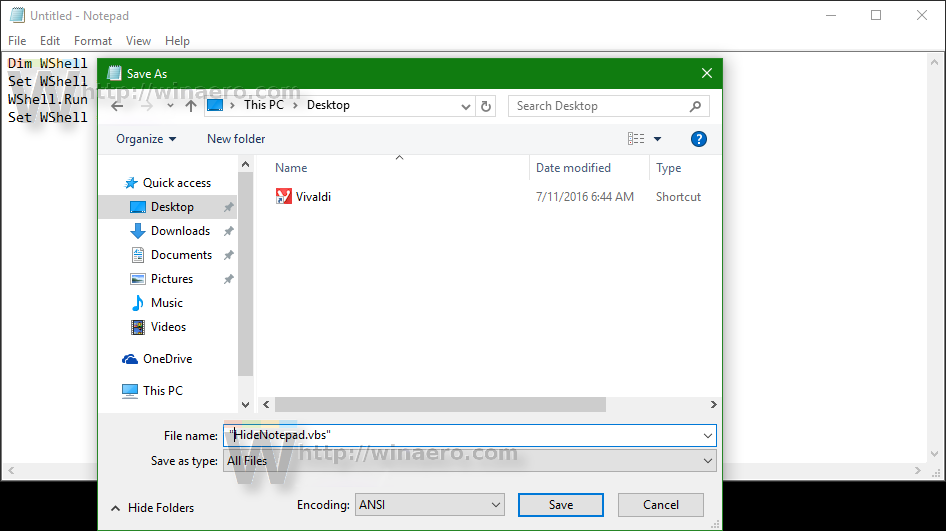Run Vbscript In Windows

A.vbs file is a (Visual Basic Script) file written in the VBScript scripting language that can be executed within Windows or Internet Explorer via the Windows-based script host (Wscript.exe), and may also use the.vb file extension.The New context menu allows users to quickly create new files, folders, and shortcuts. You can right click or press and hold on your desktop or in any folder window, and click/tap on New to open the New context menu.By default, VBScript Script File is not in the New click context menu.
Adding 'VBScript Script File' to the New context menu will make it easy for users to be able to quickly create a VBScript file on demand ready to be edited afterwards.This tutorial will show you how to add or remove VBScript Script File to the New context menu for all users in Windows 10.You must be signed in as an administrator to be able to add or remove 'Windows Batch File' from the New context menu.EXAMPLE: VBScript Script File added to New context menuHere's How:1. Do (add) or (remove) below for what you would like to do.
How To Run Vbscript In Windows Cmd
On previous versions of Windows I have used the below technique to run a batch file on Windows startup. Create a shortcut to the batch file. Once the shortcut is created, right-click the shortcut file and select Cut. Click Start, then Programs or All Programs. Find the Startup folder and right-click that folder, then select Open.
ObjectWshShell object. StrCommandString value indicating the command line you want to run. You must include any parameters you want to pass to the executable file. Integer value indicating the appearance of the program's window.
2 chainz rap or go to the league clean zip. Threat 2 Society //.
Note that not all programs make use of this information. Boolean value indicating whether the script should wait for the program to finish executing before continuing to the next statement in your script. If set to true, script execution halts until the program finishes, and Run returns any error code returned by the program. If set to false (the default), the Run method returns immediately after starting the program, automatically returning 0 (not to be interpreted as an error code). The Run method returns an integer. The Run method starts a program running in a new Windows process. You can have your script wait for the program to finish execution before continuing.
This allows you to run scripts and programs synchronously. Environment variables within the argument strCommand are automatically expanded. If a file type has been properly registered to a particular program, calling run on a file of that type executes the program. For example, if Word is installed on your computer system, calling Run on a.doc file starts Word and loads the document. The following table lists the available settings for intWindowStyle. IntWindowStyleDescription0Hides the window and activates another window.1Activates and displays a window. If the window is minimized or maximized, the system restores it to its original size and position.
Run Vbscript Windows Scheduler
An application should specify this flag when displaying the window for the first time.2Activates the window and displays it as a minimized window.3Activates the window and displays it as a maximized window.4Displays a window in its most recent size and position. The active window remains active.5Activates the window and displays it in its current size and position.6Minimizes the specified window and activates the next top-level window in the Z order.7Displays the window as a minimized window. The active window remains active.8Displays the window in its current state. The active window remains active.9Activates and displays the window.
Run Javascript In Windows 10
If the window is minimized or maximized, the system restores it to its original size and position. An application should specify this flag when restoring a minimized window.10Sets the show-state based on the state of the program that started the application.Example 1.